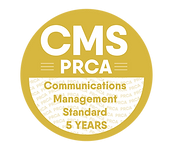What are the differences between the Colombian deal and the Good Friday Agreement?
01 September 2016 - by Quintin OliverFollowing on from his piece on the similarities between the Colombian peace deal and that of our own in Northern Ireland in 1998, Quintin Oliver looks now at what makes them different.
- The context is wholly divergent, with advanced narco-terror having become a leitmotif of the half-century conflict, across a dependent Latin American economy, servicing the US and other drug markets in the western worlds; our related criminal activity and moves to gangsterism were modest in comparison;
- The main protagonist against the government, the Revolutionary Armed Forces of Colombia, FARC, had developed a sophisticated military structure, unlike many other guerrilla-type movements, with distinct camps, ranges and training grounds, linked often to the narcotics trade and supply lines; the IRA’s small cell-based paramilitary structure was very different;
- A second armed movement, the Ejercito de Liberacion Nacional (ELN) has not been part of this peace process and remains active, already performing ‘spoiler’ tactics, to undermine its larger rival and to recruit fresh ‘refuseniks’ or dissidents into its ranks; the positioning of the INLA – and of the loyalist paramilitary groupings, the UDA, UVF and RHC – were of a different order, broadly falling into line with the emerging trend, albeit slowly; the earlier M19 armed group disbanded in the late 80s moving into social democratic political space (like the Official IRA / Sinn Féin the Workers’ Party / Democratic Left / Labour?);
- The peace negotiations in Havana (2012-2016), whilst out-of-country, have been deliberately more transparent and participatory than those of Castle Buildings, Block B, chaired by Senator Mitchell from 1996-1998; as each chapter was debated in Havana, Cuba, a simultaneous lively discussion was engaged at home, deepening citizen awareness and understanding of the terms of the emerging framework and of the necessary compromises looming. I can recall my frustration at the voluntary and community sector’s exclusion from ‘our’ peace process, as later described here: http://www.c-r.org/accord/public-participation/developing-public-capacities-participation-peacemaking – maybe Cyprus will also learn those lessons for its next referendum outing, 13 years after the failed Annan Plan iteration of 2004?
- Similarly, some of the omissions and ‘constructive ambiguities’ of the Belfast Agreement that may have served us well at the time, were consciously avoided in the Colombia accords, (perhaps with the benefit of input and insights from GFA negotiators from all sides); so, for example, the questions of victims voices, truth recovery, gender, legacy of the past, impunity avoidance and preparing for implementation are all fully covered; this may aid embedding ownership and a shorter implementation period than our two decades?
- While the republican movement had, through Sinn Féin, designed and developed its political presence and vote-building capacities, to over 10% in the early 90s, the FARC has not, leading to its public political naivete, to the point of gaucheness; in turn, this intensifies the reaction of mainstream society to question whether they should therefore seemingly be gifted seats in Congress without any electoral mandate whatsoever. The FARC is much more of a faceless jungle movement to the average Colombian than Sinn Féin, although ‘voiceless’ on broadcast media, was to us.
- The internet has taken the world by storm - in 1998 we, the YES Campaign, had an early version (yet award-winning) static five-page website, but no interactivity, no Twitter, nor Facebook!
Quintin Oliver who ran the ‘YES Campaign’here in 1998 for the Good Friday Agreement, has recently returned from Bogota where Stratagem International www.StratagemInt.com advises on the 2nd October Colombian Referendum.








